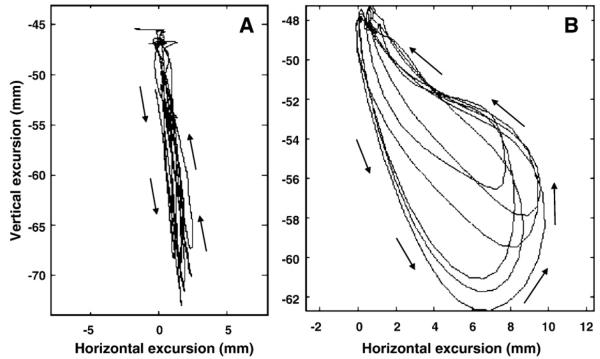Fig. 1.
A 2-dimensional representation of the proposed motion of the jaw during two distinct stages of chewing development. The tracings illustrate the predicted motion paths of the jaw during early chewing (Panel A) and mature chewing (Panel B). The x-dimension represents horizontal (side-to-side) motion and the y-dimension represents vertical (up-and-down) motion of the jaw during chewing. Panel A: Formulated kinematic example of jaw motion for early chewing. Note the strict vertical component of the jaw tracing; there is virtually no horizontal contribution. Panel B: Actual kinematic example jaw motion for mature chewing. Note the consistent rotary motion which is characteristic of mature chewing.

